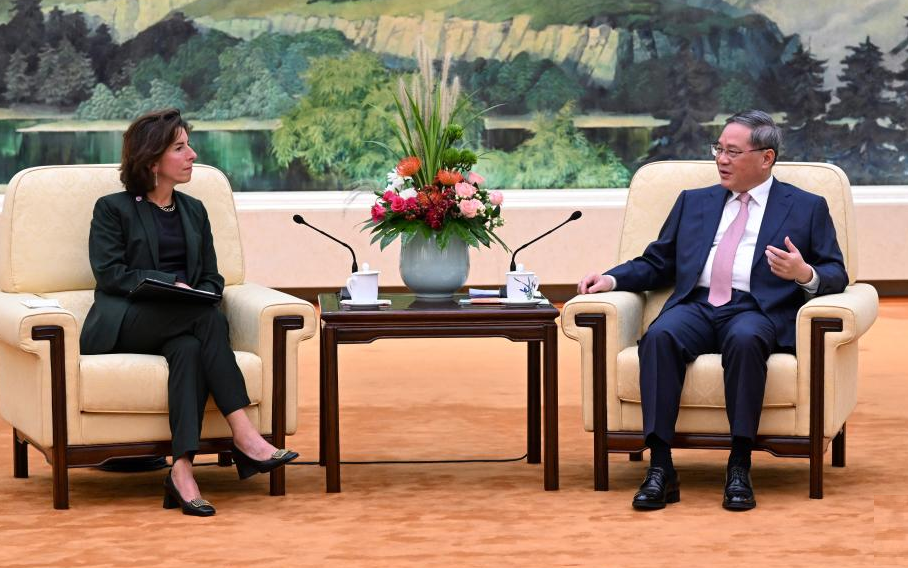
Zhao Minghao, Professor, Institute of International Studies at Fudan University, and China Forum Expert
Feb 29, 2024
The United States seeks to widen the technology gap with China as much as possible and thus will create more barriers for Chinese research and development. It may even try to push back some of the technological advancements China has made. China needs to prepare for greater pressure.
Curtis S. Chin, Former U.S. Ambassador to Asian Development Bank
Sudarshan Ramabadran, Policy Specialist, Author, and International Communications & Public Diplomacy Professional
Feb 26, 2024
Reflections on Lessons from Davos for US, China, India & Beyond– When the global order seems to be shifting faster than ever, the need for committed partnerships between established and developing powers should be seen as necessary.
Hu Shisheng, Director of Institute of South Asian Studies, China Institutes of Contemporary International Relations.
Jan 22, 2024
India wants to reduce China’s footprint in its industrial chains. China must deal with this by strengthening its own industrial and innovation chains. It must also improve its policy on industrial chain transfers. It should avoid contributing to India’s development at the cost of its own.
Brantly Womack, Professor, University of Virginia
Dec 14, 2023
The Indo-Pacific aims to contain China's influence but struggles with unclear membership and diverse objectives. By contrast, the economic region of Pacific Asia, centered on China, emphasizes interdependence, but grapples with political uncertainties due to concerns about overreliance on China. The member states of both have agency and will pursue their own interests, but China’s behavior will likely determine which grouping has the greater strategic salience.
Brian Wong, Assistant Professor in Philosophy and Fellow at Centre on Contemporary China and the World, HKU and Rhodes Scholar
Nov 03, 2023
Southeast Asia’s geographic location and burgeoning economy puts them in the center of strategic plans by neighboring China, and rivalling U.S.-interests. The path forward for the region’s states will demand acute political maneuvering.

He Weiwen, Senior Fellow, Center for China and Globalization, CCG
Sep 20, 2023
Through sincere efforts by the U.S. and China, it’s possible that the decline in trade will bottom out this year. Strong business relationships can once again serve as a stabilizing factor in the overall relationship, and inure to the benefit of our two peoples and the world.
Lucio Blanco Pitlo III, President of Philippine Association for Chinese Studies, and Research Fellow at Asia-Pacific Pathways to Progress Foundation
Aug 18, 2023
Philippines’ President Ferdinand Marcos Jr. gave his second State of the Nation Address last month, where he briefly mentioned the country’s complex relationship with China. As elsewhere, China presents challenges and opportunities for the Philippines, and this should continue to inform Marcos’ evolving foreign policy.
Vasilis Trigkas, Visiting Assistant Professor, Schwarzman College, Tsinghua University
Jul 26, 2023
Excessive Sino-American rivalry could be averted if strategists from the U.S. and China make rational assessments about the other side’s capabilities and limits - and can restrain themselves from pouncing on misperceived weaknesses.

Zhao Minghao, Professor, Institute of International Studies at Fudan University, and China Forum Expert
Jul 13, 2023
If the recent shift from decoupling to de-risking amounts to a game of semantics, it will damage what little strategic mutual trust remains between China and the United States. It will only heighten concerns and raise costs for the business community.

Bala Ramasamy, Professor of Economics and Associate Dean and Director of the Global EMBA Programme, China Europe International School in Shanghai
Matthew Yeung, Associate Professor at Lee Shau Kee School of Business and Administration, Hong Kong Metropolitan University
Apr 17, 2023
The shift of the US policy from engaging China to containing China can be traced back to the Obama administration and his pivot to Asia strategy in 2009.